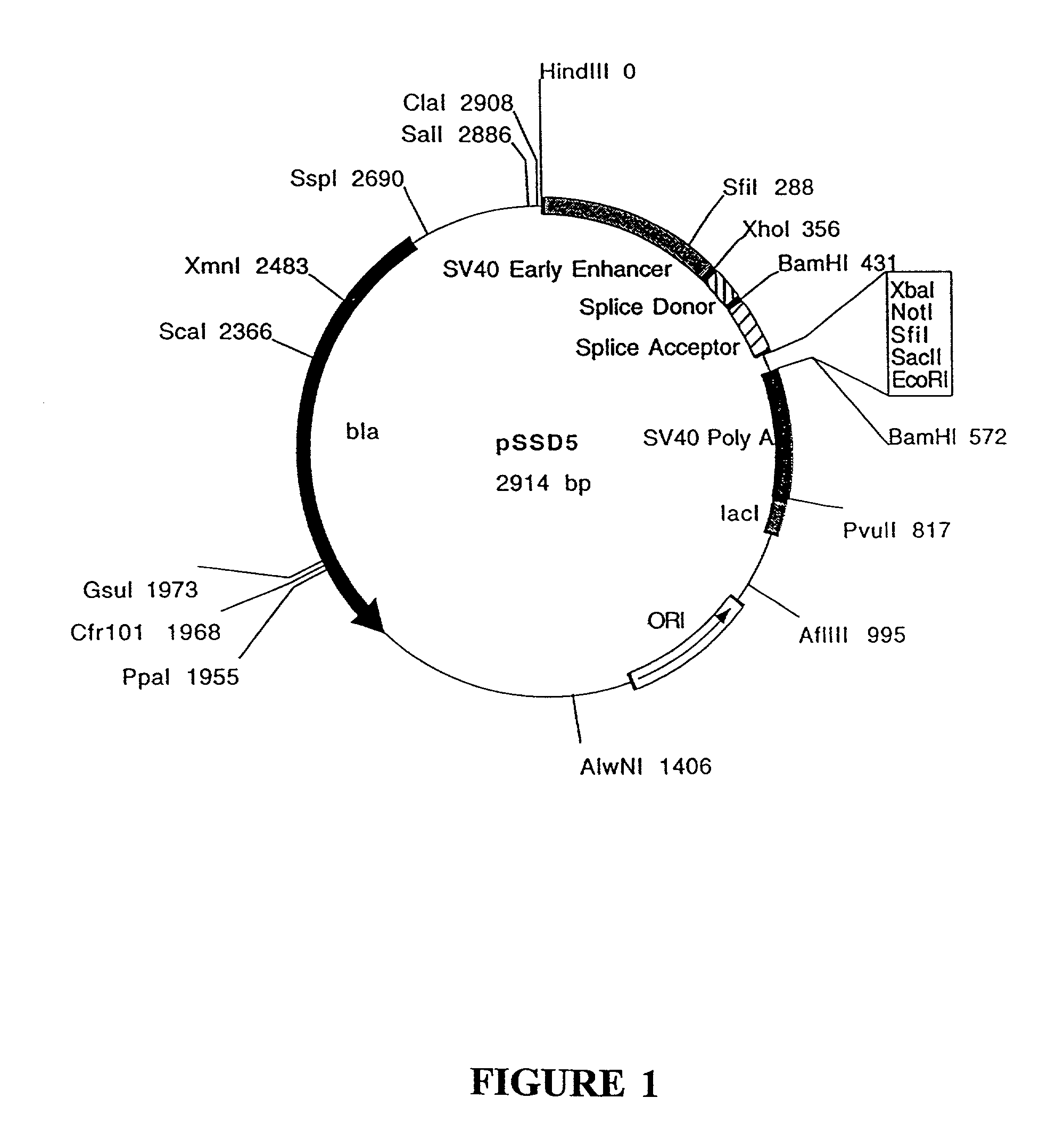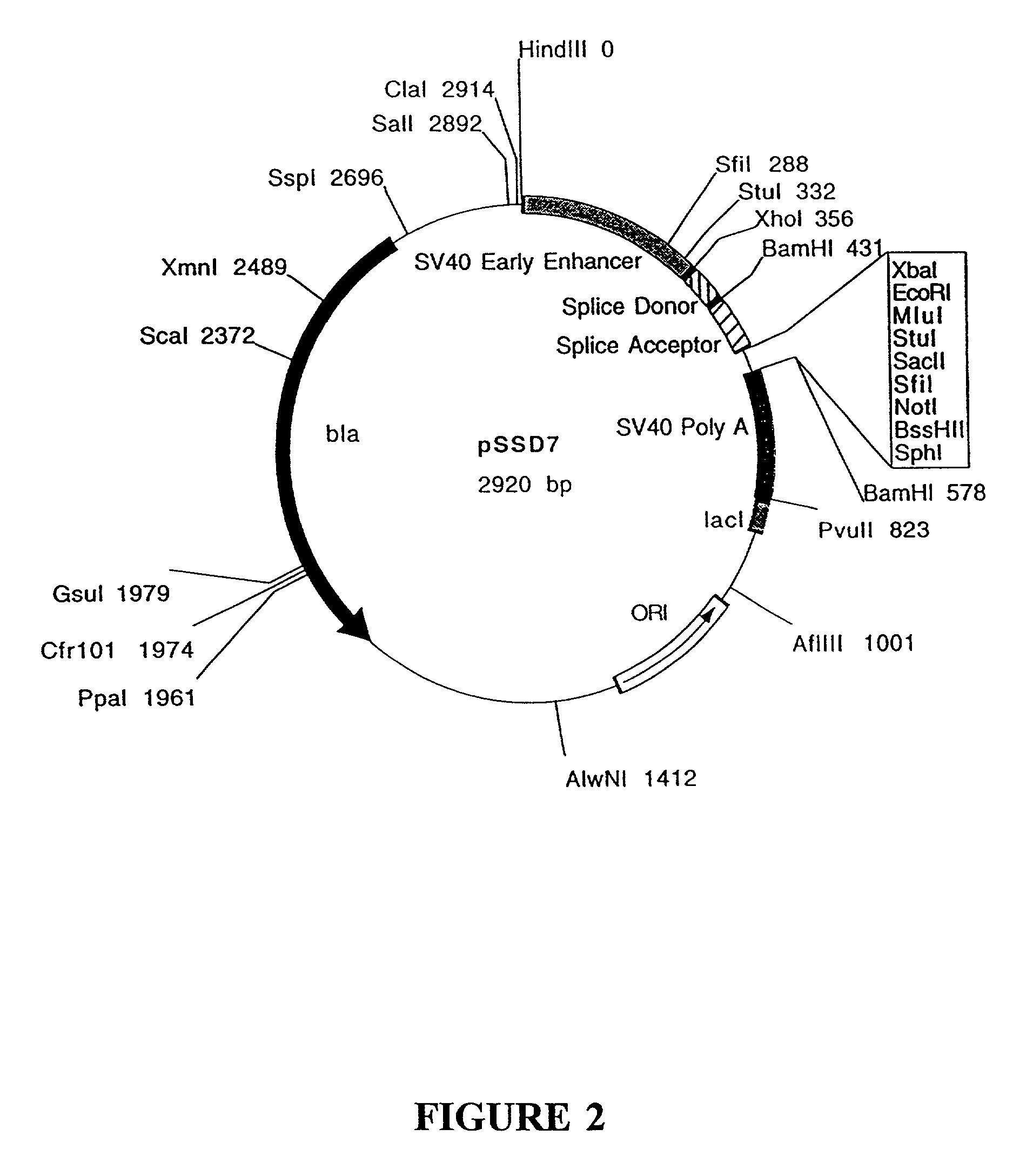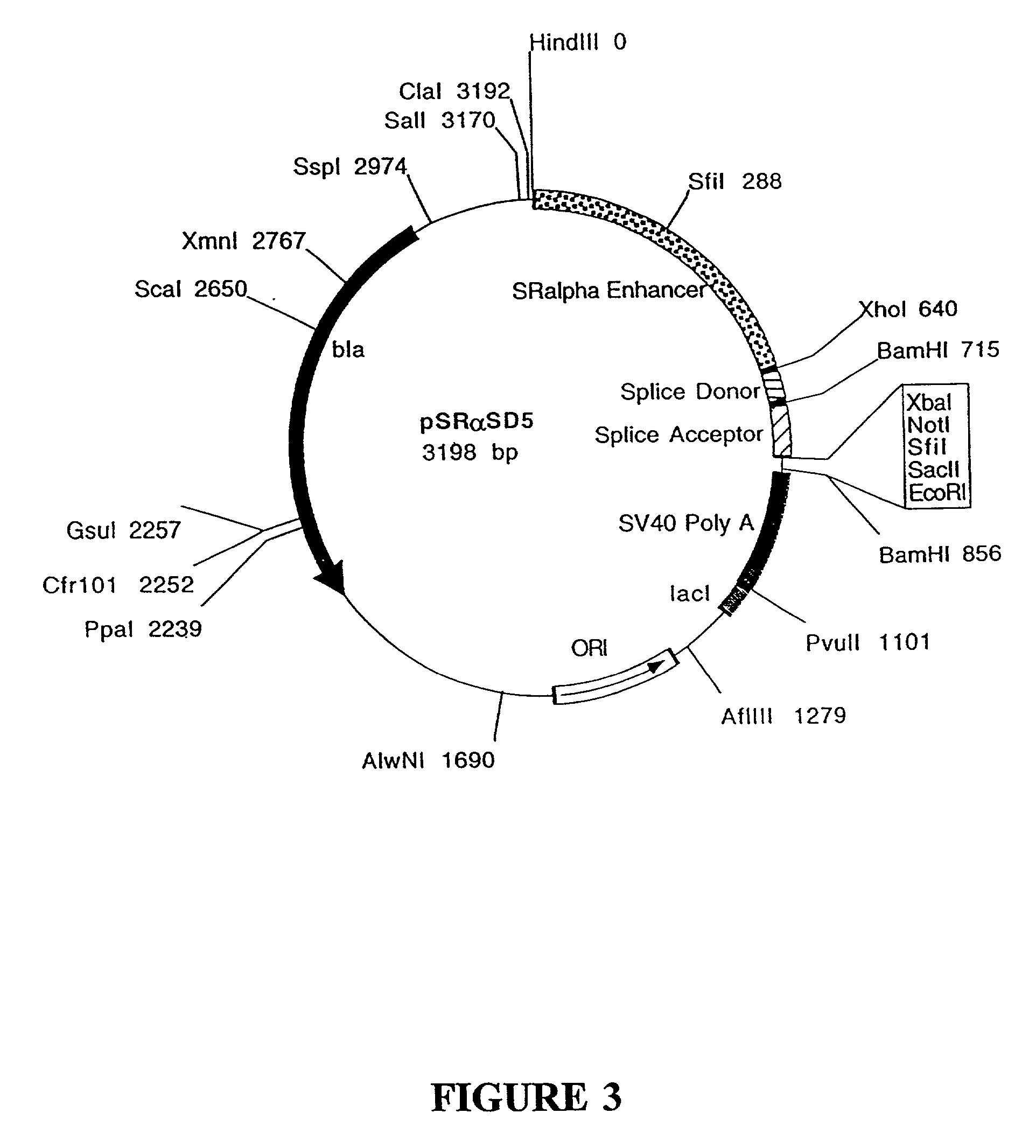Methods of treating lymphoma and leukemia
a lymphoma and leukemia technology, applied in the field of amplification and expression of recombinant genes in cells, can solve the problems of limited use of viral vectors, and limited number of cell lines which can be used, and achieve the effect of saving tim
- Summary
- Abstract
- Description
- Claims
- Application Information
AI Technical Summary
Benefits of technology
Problems solved by technology
Method used
Image
Examples
example 1
Construction of Expression Vectors
[0202]In order to construct the expression vectors of the invention a number of intermediate vectors were first constructed.
Construction of pSSD5 and pSSD7
[0203]pSSD5 and pSSD7 contain the following elements from SV40: the enhancer / promoter region, the 16S splice donor and acceptor and the poly A site. Vectors containing the SV40 enhancer / promoter sequences will replicate extrachromosomally in cell lines which express the SV40 large T antigen as the SV40 enhancer / promoter sequences contain the SV40 origin of replication.
[0204]A polylinker containing the recognition sequences for several restriction enzymes is located between the splice acceptor and poly A sequences. The polylinker allows for the easy insertion of a gene of interest. The gene of interest will be under the transcriptional control of the SV40 enhancer / promotor. pSSD5 and pSSD7 differ only in the sequences of the polylinker (sequences listed below). The polylinker of pSSD5 contains the ...
example 2
Construction of the Selection Vector pMSD5-HPRT
[0221]pMSD5-HPRT contains a full length cDNA clone encoding the mouse HPRT enzyme under the transcriptional control of the Moloney LTR. The Moloney LTR contains a strong enhancer / promoter which is active in a broad range of cell types [Laimins et al., Proc. Natl. Acad. Sci. USA 79:6453 (1984)]. The pMSD5-HPRT expression vector is used as the selective plasmid (or selective or selectable marker) when HPRT− cell lines, such as BW5147.G.1.A, are used as the recipient cell line for the generation of stable transformants. HPRT− cell lines cannot grow in medium containing hypoxanthine, aminopterin or azaserine and thymidine (HAT medium). The addition of a functional HPRT gene by gene transfer allows the cells which have integrated the vector DNA encoding the HPRT gene to grow in HAT medium.
[0222]a. Isolation of a Full Length Mouse HPRT cDNA
[0223]A cDNA library was prepared from poly A+ mRNA isolated from C6VL cells [Allison et al., J. Immunol...
example 3
Construction of the Amplification Vector pSSD7-DHFR
[0225]pSSD7-DHFR contains a full length copy of the mouse DHFR cDNA under the transcriptional control of the SV40 enhancer / promoter. This promoter / enhancer is active in a wide variety of cell types from many mammalian species [Dijkema et al., EMBO J., 4:761 (1985)]. pSSD7-DHFR is referred to as the amplifiable marker as the use of this vector allows the selection of cell lines which have amplified the vector sequences by selecting for cell which can grow in increasing concentrations of MTX.
[0226]The mouse DHFR cDNA was isolated from double stranded cDNA generated from liver RNA using the PCR as follows. Poly A+ RNA was isolated from the liver of (Balb / c×C57B1 / 6) F1 mice using standard techniques. First strand cDNA was synthesized from the poly A+ RNA in a final reaction volume of 100 μl. The following reagents were added in order: 35.6 μl H2O, 5 μl poly A+ RNA (1 μg) and 1.4 μl SBNSSdT primer (1 μg). The sequence of the SBNSSdT prim...
PUM
| Property | Measurement | Unit |
|---|---|---|
| doubling time | aaaaa | aaaaa |
| density | aaaaa | aaaaa |
| volume | aaaaa | aaaaa |
Abstract
Description
Claims
Application Information
 Login to View More
Login to View More - R&D
- Intellectual Property
- Life Sciences
- Materials
- Tech Scout
- Unparalleled Data Quality
- Higher Quality Content
- 60% Fewer Hallucinations
Browse by: Latest US Patents, China's latest patents, Technical Efficacy Thesaurus, Application Domain, Technology Topic, Popular Technical Reports.
© 2025 PatSnap. All rights reserved.Legal|Privacy policy|Modern Slavery Act Transparency Statement|Sitemap|About US| Contact US: help@patsnap.com



